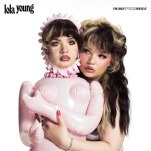Rhubarb: The Pie Plant That Does More Than You Think
Photo by Danguole LekaviciuteWhen you see rhubarb’s nascent reddish-pink knobs start to poke up from the earth and announce themselves with showy green leaves, you know that asparagus, strawberries and summer cannot be far behind. And when the strawberries do surface, our kneejerk reaction is to pair them with rhubarb, whose sour-bitter tang tames the sweetness of the season’s first legit fruit.
Rhubarb’s an herbaceous perennial and a veggie—yes, a veggie—despite the immediate propensity to pair it with sweet things and its informal moniker as “pie plant” in some parts of the country. Its leaves are poisonous, which is why you typically see them sold in big hulky bunches without them. It’s not typically an item you find early in the season, or flown in from elsewhere in the off season—it needs places that have at least two months of cold weather—but it does happen. I recently read about a supermarket in Canada offering forced rhubarb in late March/early April. I don’t know about you, but I already feel affronted when I see fresh corn from Florida or the Carolinas on the shelves this time of year. If I encountered rhubarb in late March and early April in my Pennsylvania supermarket, without seeing them at my farmers’ market, I’d likely become hostile to the innocent produce. What are YOU doing here, now?
If you spy rhubarb at your local farmers’ market during spring and early summer (depending on where you live, naturally), make sure the stalks are firm and crisp. And don’t worry if it’s green or red or some combination thereof; there’s little difference in flavor. When I see those long, tall, ruby stalks, I grab a bunch and quickly, as if someone were about to steal them from under me. The season is short—maybe not as fleeting as ramps, spring’s other coveted offering—so make the best of it.
And what does it mean to make the best of rhubarb? Strawberry rhubarb pie comes to mind without thinking, but rhubarb does well cut up into small pieces and tossed into muffins and pancakes; it keeps its shape and does not give off too much water while baking. However, when rhubarb is cooked for jams or chutneys, or even for use in a simple syrup, its membranes break down considerably and it turns to goo. One chef I spoke to, Eric Skokan of Boulder, Colorado, aptly called it “mucilaginous.”
With that in mind, I asked a few chefs who operate with a farm-to-fork ethos to help us take this “pie plant” out of the fluted tart and pie pans and into more unexpected culinary territory.

Jason Hook/h2okitchen
In eastern Pennsylvania, where seasonal and local fare is increasingly de rigueur for chefs, Chef Jason Hook of h2o kitchen uses rhubarb in many ways, but one of his most popular preparations is to pickle it. “Otherwise you have to use a lot of sugar and it turns to mush,” he says. (Yes, this is a recurring theme here.)
-

-

-

-

-

-

-

-

-

-

-

-

-

-

-

-

-

-

-

-

-

-

-

-

-

-

-

-

-

-

-

-

-

-

-

-

-

-

-

-









































